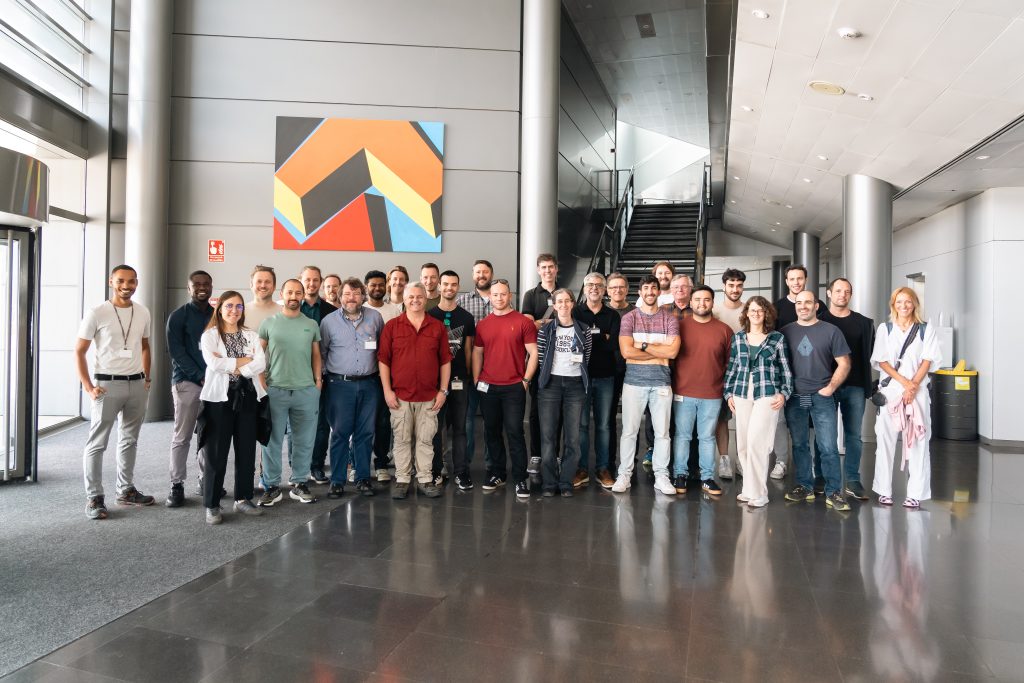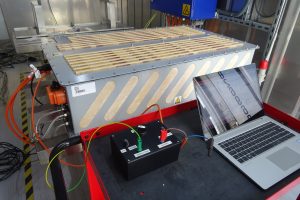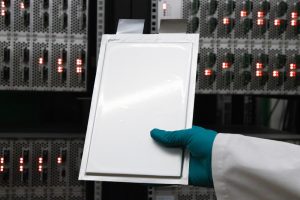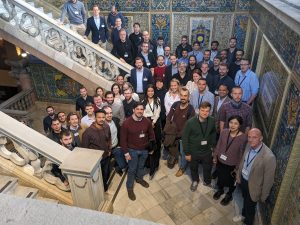Final results and reflections from COBRA project coordinator Jordi Jacas (IREC)
Over four years of intensive research and development, the COBRA consortium has achieved significant advancements in Li-ion battery technology, eliminating cobalt and enhancing all key components of the battery system.
The project has successfully produced a prototype featuring an LNMO cathode and a composite anode of silicon and graphite, paired with an innovative battery management system. This system integrates advanced safety and efficiency features, including wireless communication and sophisticated sensors. By reducing dependency on cobalt, the COBRA project promises significant benefits for the European battery industry by enhancing performance, safety, and sustainability.
Below, read insights from COBRA project coordinator, Jordi Jacas of IREC, offering final reflections on the project’s journey and celebrating its impressive achievements.
This interview features in our latest final market intelligence report, celebrating the project’s final results, and diving into the key components developed by the project partners, which showcase advancements in cell chemistry, battery management systems, and manufacturing processes.
What are the COBRA project’s most significant achievements?
The COBRA project covered the whole value chain of battery development, from the research and development of new battery components, manufacturing of sustainable modules and packs, and smart sensing to environmental, economic, and social aspects, including strategies for recycling and second-life batteries. The project has reached many achievements. Still, if I have to mention the most significant ones, I would highlight: 1) the development of cobalt-free cathode technology based on lithium-rich oxides via aluminium doping, 2) the improved sustainability of the anode electrode using recycled silicon, 3) the implementation of various sensors (thermal, impedance, gas, and strain gauge) at the cell or module level, together with optic-based communications at the BMS level, and 4) the fabrication of an eco-friendly battery pack using green and recycled materials with validated properties for the EV industry. These developments are relevant to generation 3b technology but can also be applied to other next-generation storage systems and applications beyond the EV industry.
Are there any specific milestones that you believe were pivotal to the project’s success?
The fabrication of the final high-energy pouch cells, which were 25 Ah, was a significant achievement that contributed to the project’s success. The second major success was implementing advanced sensing at the cell or module level; the results and outcomes will contribute to developing safer batteries.
How important were the collaborations and partnerships within the consortium for the project’s success?
They were very important. I’d like to answer this question as the WP1 leader and not as the coordinator. Together with SU, Cerpotech, and IMEC, new cathode formulations based on lithium-rich cobalt-free oxides were fine-tuned using aluminium doping, leading to a significant improvement in cycling stability, a major drawback to address for the future implementation of generation 3b batteries, which aim to be close to 2000 cycles. This collaboration within the consortium resulted in several papers and, more importantly, expertise on the physicochemical and structural factors governing the electrochemical performance of these challenging materials.
What lessons were learned from these collaborations, and how can they be applied to future Horizon Europe projects and the battery industry at large?
Personally, it was enriching to participate in the discussions of prototype pouch cell fabrication that were conducted during the project. However, it was also extremely challenging as many requirements were needed, starting from significant amounts of “good” materials to the optimisation of the cell specifications, which are many and go beyond the day-to-day work at the laboratory level. As a lesson learnt, the answer is easy: we need more pilot plants. This is key to launching future battery technologies at scale.
What were some major or unexpected challenges faced during the project, and how did you overcome them?
Our most significant challenge was integrating the new battery components into a pouch cell. Aspects such as material upscaling with demonstrated reproducibility and the processability of the electrodes for large-scale (high-energy) battery cell manufacturing were ambitious in the COBRA project. First, we had to establish extra control steps for the material batches to ensure reproducibility. Secondly, we evaluated different post-treatment processes at a large scale within the consortium, which were not considered initially. Upscaling new battery chemistry into working cells at a large scale takes much time, well beyond four years. Remember that state-of-the-art technology based on cobalt-rich materials and graphite has taken over 20 years to reach its maturity level.
What advice would you give to future coordinators and partners to make the most of a collaborative project (both for themselves and for Europe)?
COBRA has been a large consortium of 19 partners with many developments covering the whole value chain. It was important to set clear targets for each development in addition to the overall project scope and, as much as possible, minimise the dependency of developments on each other. So, good organisation and communication are very important. In a similar way, this communication needs to be fluent and efficient with the Project Officer, as it was in COBRA.
What do you see as the next steps towards commercialisation/exploitation for the innovations developed within COBRA?
A notable development conducted in COBRA was a new pack constructed from green and recycled materials. Wood and recycled aluminium were used for the fabrication. The pack is lighter and compliant with the high safety standards of EVs. This job was conducted by Carissma, and currently, several OEMs from the automotive industry have contacted them for further development. I would say that this is a good example of COBRA’s impact on the European battery ecosystem.
What do you see as the main long-term impact(s) of the project’s results on the future of the EU battery industry and sustainability practices?
Producing high-quality materials is becoming more challenging due to sustainability constraints. This is fine; we like challenges as battery researchers or engineers for a better environment. This is our job. Cobalt-free materials are promising for many reasons but challenging at the same time. There are several candidates, and all have pros and cons. However, while we are investigating their properties and enhancing performances, we also need to consider large resources, which means more material suppliers. So, in COBRA, we have helped to implement recycled materials, such as silicon for the anode and aluminium for the pack, and to produce promising cathode materials in Europe, which could help to minimise our dependency on Asian suppliers. These are very important topics for the future battery ecosystem, and I am sure COBRA will impact them in the long term.
IREC is the Catalonia Institute for Energy Research, (Institut de Recerca en Energia de Catalunya). Created in 2008, it aims to contribute to the sustainable development of society and to increase the competitiveness of industry in the energy sector. The centre develops research of excellence in the medium and long term, innovation and the development of new technological products and the dissemination of important knowledge and findings to the general public.


If you’d like to reach out to one of the partners, contact cobra@baxcompany.com or visit our X and LinkedIn channels.




